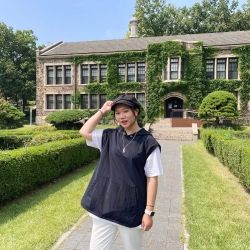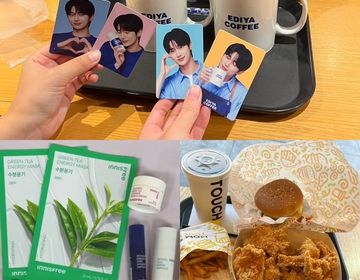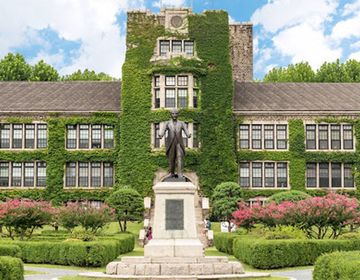A Review of the National Museum of Korea
Last Saturday (Oct.16th), I visited the National Museum of Korea with a friend from Sogang University, who is also an international student here. CIEE actually organized the museum visits on the first weekend, but the sign-up spots had been filled up very quickly. I could not get a spot back then, so visiting there had always been on my to-do list during my stay in Seoul. After going to many museums everywhere in the world, the exhibitions and collections are no longer my main interest because I would forget the history or stories behind them soon after I left the museums; rather, now I care the most about the overall visiting experience as an important criterion whether the museum worths visiting.
One-sentence review: A free museum with well-organized exhibition rooms and a pleasant visiting atmosphere which definitely meets the standard of a "national" museum and is a wonderful place to spend 2-3 hours during any time of the week.

Please find the full version below:
First thing first: reservation is needed for COVID prevention, but ARC is not needed for making the reservation. There are many time slots during the day, while the official website has an English version and is pretty easy to navigate. My friend made the reservation at 8 am on Saturday morning and the earliest time he could get for us was 5:30 pm (we were planning for 4:00 pm). Controlling the number of visitors really helped to create a quiet environment in the museum: neither full of people nor too empty.
The most memorable feature of the museum was not any of the collections lol, but the surroundings and the design of the building. There is an artificial lake with a small pavilion after you pass the main gate. More exciting was to look farther to the Namsan Tower, especially during the sunset time and night time. The museum building itself is also well-designed: looks simple but modern and clean.

There are three floors in total, with clear-themed exhibition rooms. 1F is all about Korean history based on a chronicle order. The key is to find the most ancient time and follow the arrows on the floor to learn about Korean history in full. It was kind of easy to get lost in the rooms because some exits were closed. 2F shows the paintings, calligraphy works, donations, and personal collections. I think this floor can be sacrificed if you do not have enough time or you are not that interested in paintings or calligraphy. The theme of 3F is world history. There are separate exhibition rooms showing collections from China, Japan, Southeast Asia, Egypt, etc.
We also checked out the special exhibition about the Chinese Bronze history and culture held together with the Shanghai Museum (which is also free, and that's part of the reason why I wanted to visit the museum). I am pretty familiar with the historical values behind the bronze crafts, but it was so interesting to see them again in Korea rather than in China. The recommended visiting route is 1F - special exhibition - 3F - 2F.

There are a few other noticeable features of the museum. The interactive media was quite advanced and fun to use. In one spot, they made a large painting into an interactive game where you can know what each character is doing as portrayed. There is a short light show after 7 pm (should be at 8 pm, but somehow that day it began around 7:15 pm). There are plenty of seats available everywhere in the museum! Walking from room to room can be very tiring, so I found such service very visitor-friendly.

If you want somewhere to visit after a day of studying or just have no plan for a weekend, the National Museum of Korea is definitely a meaningful place to go!
Related Posts
K-Pop Stan’s Guide to South Korea: 5 Must-Do Activities While Studying Abroad
By: Jacqueline Lee South Korea is the place to be as a kpop stan, so here are 5 activity ideas that you must do during your time abroad! 1. Collect... keep reading
Courses at Yonsei University—Difficulty, Planning & Advice!
If you're curious about the difficulty of college courses in South Korea, as well as course planning and advice, then this article is for you. In this blog, I delve into my courses at Yonsei University and offer helpful advice for course planning—tune in to learn more!
Fitting in with locals when you can’t speak the language
By: Raphael Li Coming to Seoul, there are so many different experiences you can have even as an exchange student. Some people make only exchange/international friends. Some students make many... keep reading








